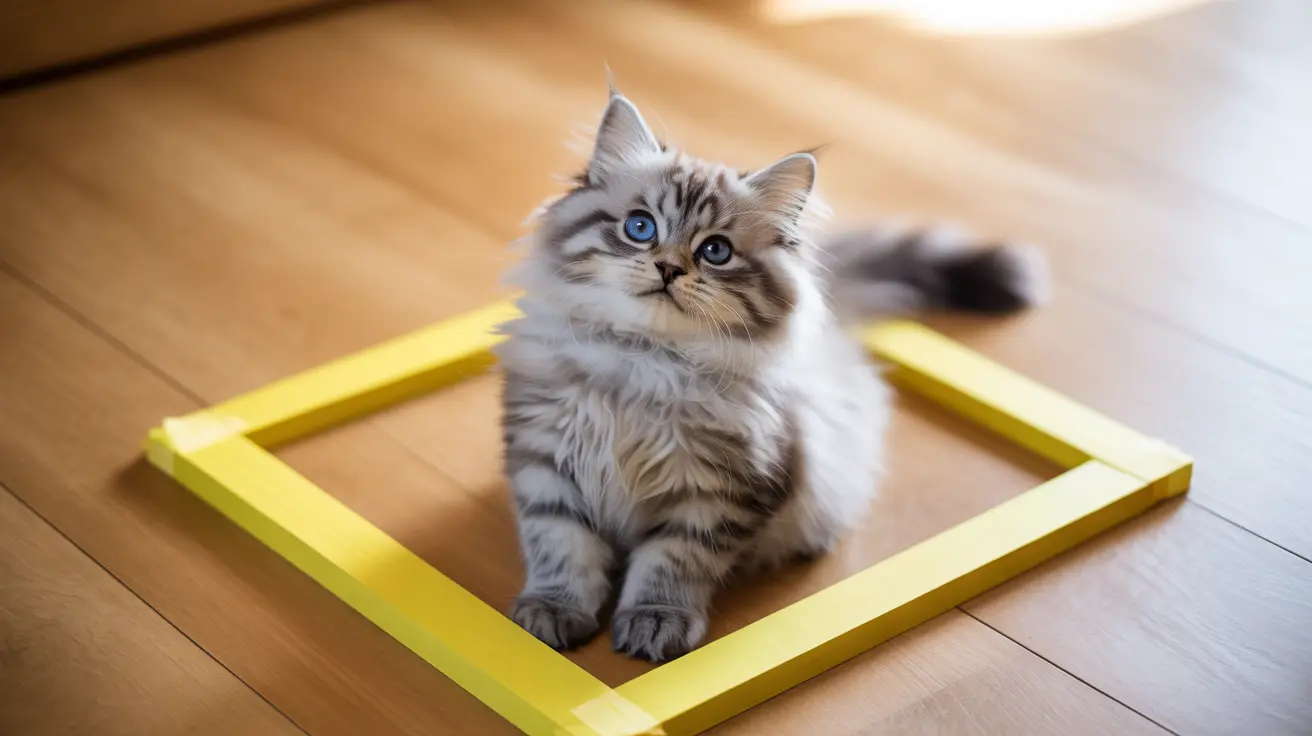If you've ever placed a square on the floor - whether it's a piece of paper, tape outline, or even just a newspaper - you've likely witnessed your cat's inexplicable attraction to it. This fascinating feline behavior has not only spawned countless social media posts but has also caught the attention of scientific researchers. Let's explore the compelling reasons behind cats' mysterious attraction to squares.
From evolutionary instincts to sophisticated visual perception, multiple factors contribute to this peculiar behavior. Understanding why cats are drawn to squares offers insights into their psychology and can help pet owners better enrich their feline friends' environments.
The Safety and Security Connection
Cats instinctively seek out enclosed spaces for protection, a behavior inherited from their wild ancestors. Even when a square is merely outlined on the floor, it creates a psychological boundary that triggers this safety-seeking instinct. Research shows that cats perceive these boundaries as potential safe zones, much like they would view a box or other enclosed space.
This perception of safety exists even when the square provides no actual physical protection. The defined edges seem to give cats a sense of control over their immediate environment, making them feel more secure and protected from potential threats.
Understanding Visual Perception in Cats
Recent scientific studies have revealed that cats can perceive and respond to "illusory contours" - meaning they can see boundaries that aren't physically present. A groundbreaking 2021 study demonstrated that cats respond similarly to both real squares and optical illusions creating the appearance of squares, known as Kanizsa squares.
This sophisticated visual processing ability suggests that cats' attraction to squares goes beyond simple pattern recognition. They actually process these shapes in ways similar to humans, showing advanced cognitive capabilities previously unknown in felines.
Territory Marking and Ownership
When a cat sits on a square, they're often engaging in territorial behavior. The defined boundaries of a square create a clear space for cats to claim as their own. By sitting within these boundaries, cats can mark the area with their scent glands, effectively stating "this is mine" to other animals.
This territorial aspect explains why cats might repeatedly return to the same square spot, even when more comfortable alternatives are available.
The Comfort Factor
The "if I fits, I sits" phenomenon isn't just about security - it's also about comfort. Squares often provide an ideal size for a cat's natural sitting or lounging position. Whether curled up or in the classic "loaf" position, most cats find that square shapes accommodate their body size perfectly.
Additionally, many square objects that attract cats - like cardboard boxes or folded blankets - offer thermal benefits, providing warmth and insulation that makes them even more appealing as resting spots.
Frequently Asked Questions
Why do cats like sitting on squares, even if it's just tape on the floor?
Cats are attracted to squares because they create a visual boundary that triggers their instinctive need for security and territory marking, even when the square is just an outline on the floor.
How do squares give cats a sense of safety or security?
Squares provide defined boundaries that cats interpret as safe zones, similar to how they view enclosed spaces in nature. This creates a psychological sense of protection, even without physical barriers.
Can cats perceive and respond to illusory squares or visual illusions?
Yes, scientific research has confirmed that cats can perceive and respond to illusory contours, including Kanizsa squares, demonstrating sophisticated visual processing abilities similar to humans.
Does sitting on a square help cats mark their territory?
Yes, when cats sit on squares, they often use this behavior as a way to mark territory by leaving their scent from glands in their paws and body, effectively claiming that space as their own.
How can I create a "cat square" at home to amuse or comfort my cat?
You can create a cat square using masking tape on the floor, placing a piece of paper, or drawing a square with thick lines. Experiment with different sizes and materials to find what your cat prefers, but ensure any materials used are safe for pets.
Creating an Enriching Environment
Understanding why cats like squares can help pet owners create more engaging environments for their feline companions. Whether it's providing actual boxes, creating tape outlines, or strategically placing square-shaped items around the home, these simple additions can significantly enhance your cat's environmental enrichment and overall well-being.






